- Home
- Clive Cussler
Poseidon's Arrow
Poseidon's Arrow Read online
DIRK PITT® ADVENTURES BY CLIVE CUSSLER
Crescent Dawn (with Dirk Cussler)
Arctic Drift (with Dirk Cussler)
Treasure of Khan (with Dirk Cussler)
Black Wind (with Dirk Cussler)
Trojan Odyssey
Valhalla Rising
Atlantis Found
Flood Tide
Shock Wave
Inca Gold
Sahara
Dragon
Treasure
Cyclops
Deep Six
Pacific Vortex!
Night Probe!
Vixen 03
Shock Wave
Raise the Titanic!
Iceberg
The Mediterranean Caper
FARGO ADVENTURES BY CLIVE CUSSLER
WITH THOMAS PERRY
The Tombs
WITH GRANT BLACKWOOD
The Kingdom
Lost Empire
Spartan Gold
ISAAC BELL NOVELS BY CLIVE CUSSLER
The Thief (with Justin Scott)
The Race (with Justin Scott)
The Spy (with Justin Scott)
The Wrecker (with Justin Scott)
The Chase
KURT AUSTIN ADVENTURES BY CLIVE CUSSLER
WITH GRAHAM BROWN
The Storm
Devil’s Gate
WITH PAUL KEMPRECOS
Medusa
White Death
The Navigator
Fire Ice
Polar Shift
Blue Gold
Lost City
Serpent
OREGON FILES ADVENTURES
BY CLIVE CUSSLER
WITH JACK DU BRUL
The Jungle
The Silent Sea
Corsair
Plague Ship
Skeleton Coast
Dark Watch
WITH CRAIG DIRGO
Golden Buddha
Sacred Stone
NONFICTION BY CLIVE CUSSLER
Built for Adventure: The Classic Automobiles of Clive Cussler and Dirk Pitt®
WITH CRAIG DIRGO
The Sea Hunters
The Sea Hunters II
Clive Cussler and Dirk Pitt Revealed
G. P. PUTNAM’S SONS
Publishers Since 1838
Published by the Penguin Group
Penguin Group (USA) Inc., 375 Hudson Street, New York, New York 10014, USA • Penguin Group (Canada), 90 Eglinton Avenue East, Suite 700, Toronto, Ontario M4P 2Y3, Canada (a division of Pearson Penguin Canada Inc.) • Penguin Books Ltd, 80 Strand, London WC2R 0RL, England • Penguin Ireland, 25 St Stephen’s Green, Dublin 2, Ireland (a division of Penguin Books Ltd) • Penguin Group (Australia), 707 Collins Street, Melbourne, Victoria 3008, Australia (a division of Pearson Australia Group Pty Ltd) • Penguin Books India Pvt Ltd, 11 Community Centre, Panchsheel Park, New Delhi–110 017, India • Penguin Group (NZ), 67 Apollo Drive, Rosedale, Auckland 0632, New Zealand (a division of Pearson New Zealand Ltd) • Penguin Books, Rosebank Office Park, 181 Jan Smuts Avenue, Parktown North 2193, South Africa • Penguin China, B7 Jaiming Center, 27 East Third Ring Road North, Chaoyang District, Beijing 100020, China
Penguin Books Ltd, Registered Offices: 80 Strand, London WC2R 0RL, England
Copyright © 2012 by Sandecker, RLLLP
All rights reserved. No part of this book may be reproduced, scanned, or distributed in any printed or electronic form without permission. Please do not participate in or encourage piracy of copyrighted materials in violation of the authors’ rights. Purchase only authorized editions.
Published simultaneously in Canada
ISBN 978-1-101-60700-8
ENDPAPER AND INTERIOR ILLUSTRATIONS BY ROLAND DAHLQUIST
This is a work of fiction. Names, characters, places, and incidents either are the product of the authors’ imaginations or are used fictitiously, and any resemblance to actual persons, living or dead, businesses, companies, events, or locales is entirely coincidental.
Contents
Also by Clive Cussler
Title Page
Copyright
Map
PROLOGUE: BARBARIGO
PART I: POSEIDON’S ARROW
Chapter 1
Chapter 2
Chapter 3
Chapter 4
Chapter 5
Chapter 6
Chapter 7
Chapter 8
Chapter 9
Chapter 10
Chapter 11
Chapter 12
Chapter 13
Chapter 14
Chapter 15
Chapter 16
Chapter 17
Chapter 18
Chapter 19
Chapter 20
Chapter 21
Chapter 22
Chapter 23
Chapter 24
Chapter 25
PART II: RARE EARTH
Chapter 26
Chapter 27
Chapter 28
Chapter 29
Chapter 30
Chapter 31
Chapter 32
Chapter 33
Chapter 34
Chapter 35
Chapter 36
Chapter 37
Chapter 38
Chapter 39
Chapter 40
Chapter 41
Chapter 42
PART III: PANAMA RUN
Chapter 43
Chapter 44
Chapter 45
Chapter 46
Chapter 47
Chapter 48
Chapter 49
Chapter 50
Chapter 51
Chapter 52
Chapter 53
Chapter 54
Chapter 55
Chapter 56
Chapter 57
Chapter 58
Chapter 59
Chapter 60
Chapter 61
Chapter 62
Chapter 63
Chapter 64
Chapter 65
Chapter 66
Chapter 67
Chapter 68
Chapter 69
Chapter 70
Chapter 71
Chapter 72
Chapter 73
Chapter 74
Chapter 75
Chapter 76
Chapter 77
Chapter 78
Chapter 79
Chapter 80
Chapter 81
EPILOGUE: RED DEATH
Chapter 82
Chapter 83
Chapter 84
Chapter 85
PROLOGUE
BARBARIGO
OCTOBER 1943
THE INDIAN OCEAN
THE LIGHT OF A HALF-MOON SHIMMERED OFF THE RESTLESS sea like a streak of flaming mercury. To Lieutenant Alberto Conti, the iridescent waves reminded him of a Monet waterscape viewed in a darkened room. The silvery froth reflected the moonlight back to the sky, illuminating a bank of clouds far to the north, the fringe of a storm that was soaking the fertile coast of South Africa some fifty miles away.
Tucking his chin from the moist breeze t
hat buffeted him, Conti turned to face a young seaman standing watch beside him on the conning tower of the Italian submarine Barbarigo.
“A romantic evening, Catalano, is it not?”
The sailor gave him a quizzical look. “The weather is quite pleasant, sir, if that’s what you mean.” Though fatigued like the rest of the crew, the seaman still held a rigid demeanor in the presence of officers. It was a youthful piety, Conti considered, one that would eventually vanish.
“No, the moonlight,” Conti said. “I bet it shines over Naples tonight as well, glistening off the cobblestone streets. It wouldn’t surprise me, in fact, if a handsome officer of the Wehrmacht isn’t escorting your fiancée on a stroll about Piazza del Plebiscito at this very moment.”
The young sailor spat over the side, then faced the officer with burning eyes.
“My Lisetta would sooner jump off the Gaiola Bridge than associate with any German pig. I do not worry, for she carries a sap in her pocketbook while I’m away, and she knows how to use it.”
Conti let out a deep laugh. “Perhaps if we armed all of our women, then neither the Germans nor the Allied Forces would dare set foot in our country.”
Having been at sea for weeks, and away from his homeland for months more, Catalano found little humor in the comment. He scanned the horizon, then nodded toward the dark, exposed bow as their submarine sliced through the waves.
“Sir, why have we been relegated to transport duty for the Germans rather than the merchant raiding, for which the Barbarigo was built?”
“We’re all puppets on the Führer’s string these days, I’m afraid,” Conti replied, shaking his head. Like most of his countrymen, he had no idea that forces were at work in Rome that would, in a matter of days, oust Mussolini from power and announce an armistice with the Allies. “To think that we had a larger submarine fleet than the Germans in 1939, yet we now take our operational orders from the Kriegsmarine,” he added. “The world is not so easily explained at times.”
“It doesn’t seem right.”
Conti gazed across the sub’s large forward deck. “I guess the Barbarigo is too big and slow for the latest armed convoys, so we are now little more than a freighter. At least we can say our Barbarigo attained a proud wartime record before her conversion.”
Launched in 1938, the Barbarigo had sunk a half dozen Allied ships in the Atlantic during the early days of the war. Displacing over a thousand tons, she was much larger than the feared Type VII U-boats of the German wolf pack. But as German surface ship losses began to mount, Admiral Dönitz suggested converting several of the large Italian sommergibili into transport vessels. Stripped of her torpedoes, deck gun, and even one of her heads, the Barbarigo had been sent to Singapore as a cargo vessel, filled with mercury, steel, and 20mm guns for the Japanese.
“Our return cargo is deemed highly critical to the war effort, so somebody has to act as the mule, I suppose,” Conti said. But deep down, he was angered by the transport duty. Like every submariner, he had something of the hunter in him, a longing to stalk the enemy. But now an enemy encounter would mean death for the Barbarigo. Stripped of its weaponry and floundering along at twelve knots, the submarine was more a sitting duck than a feared attacker.
As a white-tipped wave splashed against the bow, Conti glanced at his illuminated wristwatch.
“Less than an hour to sunrise.”
Heeding the unspoken command, Catalano hoisted a pair of binoculars and scanned the horizon for other vessels. The lieutenant followed suit, circling the conning tower with his eyes, taking in the sea and sky. His thoughts drifted to Casoria, a small town north of Naples, where his wife and young son awaited him. A vineyard grew behind their modest farmhouse, and he suddenly longed for the lazy summer afternoons when he would chase his boy through the sprouting vines.
Then he heard it.
Over the drone of the submarine’s twin diesel engines, he detected a different sound, something of a high-pitched buzz. Snapping erect, he didn’t waste time fixing a position.
“Secure the hatch!” he cried.
He immediately dropped down the interior ladder. The emergency dive alarm rang out an instant later, sending the crew scurrying to their stations. In the engine room, a massive clutch was engaged, killing the diesel engines and transferring drive power to a bank of battery-powered electric motors. Seawater began to slosh across the forward deck as Catalano sealed the conning tower hatch, then descended to the control room.
Normally, a well-trained crew could crash-dive a submarine in under a minute. But since it was loaded to the gills in transport mode, there was little the Italian sub could do quickly. With agonizing leisure, it finally sagged under the surface nearly two minutes after Conti had detected the approaching aircraft.
His boots clanking on the steel ladder as he descended into the control room, Catalano turned and scurried forward to his emergency dive station. The clatter of the diesel engines had fallen quiet as the sub converted to battery propulsion, and the crew mirrored the silence by speaking in hushed tones. The Barbarigo’s skipper, a round-faced man named De Julio, stood rubbing sleep from his eyes as he asked Conti if they’d been seen.
“I can’t say. I didn’t actually see the aircraft. But the moon is bright and the seas are relatively calm. I am sure we are visible.”
“We will know soon enough.”
The captain stepped to the helm station, scanning the depth gauge. “Take us to twenty meters, then full right rudder.”
The submarine’s chief steersman nodded as he repeated the command, eyeing the gauges before him as his grip tightened on a large metal steering wheel. The control room fell silent as the men awaited their fate.
A THOUSAND FEET ABOVE THEM, a lumbering British PBY Catalina flying boat released two depth charges that whirled toward the sea like a pair of spinning tops. The aircraft was not yet equipped with radar; it was the RAF plane’s rear gunner who had spotted the milky wake of the Barbarigo, angling across the rippled surface. Thrilled with his find, he pressed his nose against the acrylic window, wide-eyed, as the twin explosives splashed into the sea. Seconds later, two small geysers of spray shot into the air.
“A bit late, I believe,” the copilot said.
“I suspected as much.” The pilot, a tall Londoner who wore a clipped mustache, banked the Catalina in a tight turn with all the emotion of pouring a cup of tea.
Dropping the charges was something of a guessing game, as the submarine had already disappeared from view, though its surface wake was still visible, and the plane had to strike quickly. The airborne depth charges activated at a preset depth of only twenty-five feet. Given enough time, the sub would easily dive beyond their range.
The pilot lined up for another run, tracking a marker buoy they had released ahead of the initial attack. Eyeing the remnants of the sub’s fading wake, he gauged the vessel’s unseen path, then gunned the pig-bellied Catalina just past the buoy.
“Coming up on her,” he told the bombardier. “Release if you’ve got a target.”
The bombardier for the eight-man crew sighted the sub and flipped a toggle switch, releasing a second pair of depth charges stowed under the Catalina’s wings.
“Depth charges away. Spot-on this time, I’d say, Flight Lieutenant.”
“Let’s try one more for good measure, then see if we can raise a surface ship in the vicinity,” the pilot replied, already banking the plane hard over.
INSIDE THE BARBARIGO, the twin blasts shook the bulkheads with a deep shudder. The overhead lights flickered and the hull groaned, but no rush of water penetrated the interior. For a moment, the explosion’s deafening roar seemed to be the worst consequence, ringing in each crewman’s ears like the bells of St. Peter’s Basilica. But then the ringing was overpowered by a metallic clang that reverberated from the stern, followed by a high-pitched squeal.
<
br /> The captain felt a slight change in the vessel’s trim. “Fore and aft damage reports,” he yelled. “What’s our depth?”
“Twelve meters, sir,” the pilot said.
No one in the control room spoke. A cacophony of hisses and creaks permeated the compartment as the sub dove deeper. But it was the sound they didn’t hear that prickled their ears—the splash and click of a pair of depth charges detonating alongside the submerged vessel.
The Catalina had dropped wide on its last pass, its pilot guessing north while the Barbarigo veered south. The last muffled explosions barely buffeted the submarine as it plunged beneath the reach of the depth charges. A collective sigh was expelled as, to a man, the crew realized they were safe for the time being. Their only fear now would be if an Allied surface ship could be summoned to renew the attack.
Their relief was cut short by a cry from the steersman.
“Captain, we seem to be losing speed.”
De Julio stepped close and examined a bank of gauges near the pilot’s seat.
“The electrical motors are operational and engaged,” the young sailor said, wrinkling his brow. “But I show no revolutions on the driveshaft.”
“Have Sala report to me at once.”
“Yes, sir.” A sailor near the periscope turned to retrieve the Barbarigo’s chief engineer. He’d taken only two steps when the engineer appeared in the aft passageway.
Chief Engineer Eduardo Sala moved like a bulldozer, his squat frame churning forward in a blunt gait. He approached the captain and stared at him with harsh black eyes.
“Sala, there you are,” the captain said. “What is our operational status?”
“The hull is secure, sir. We do have heavy leakage at the main shaft seal, which we are attempting to stem. I can report one injury, Engineer Parma, who fell and broke his wrist during the attack.”
“Very well, but what about the propulsion? Are the electric motors disabled?”
“No, sir. I disengaged the main drive motors.”
“Are you crazy, Sala? We were under attack and you disengaged the motors?”
Sala looked at the captain with contempt.
“They are irrelevant now,” he said quietly.
“What are you saying?” De Julio asked, wondering why the engineer was evasive.

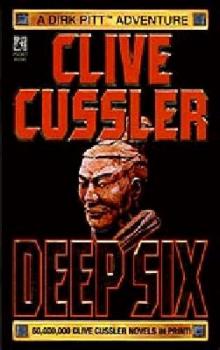 Deep Six
Deep Six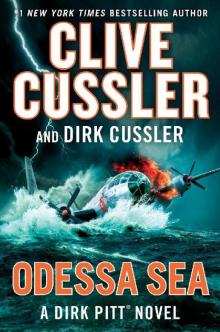 Odessa Sea
Odessa Sea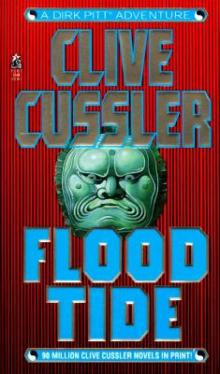 Flood Tide
Flood Tide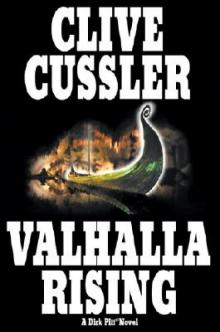 Valhalla Rising
Valhalla Rising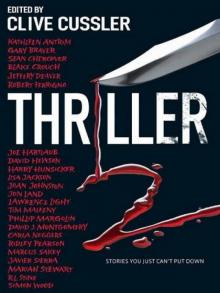 Thriller 2
Thriller 2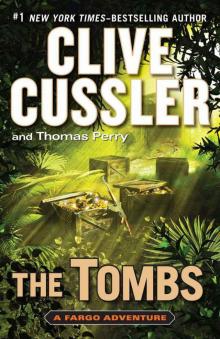 The Tombs
The Tombs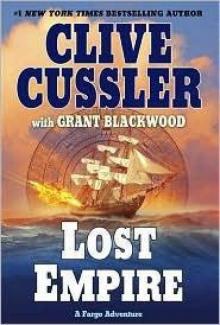 Lost Empire
Lost Empire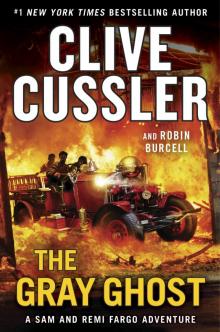 The Gray Ghost
The Gray Ghost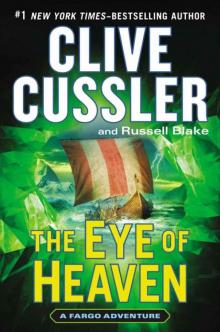 The Eye of Heaven
The Eye of Heaven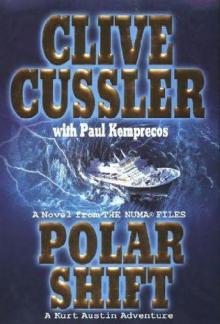 Polar Shift
Polar Shift The Kingdom
The Kingdom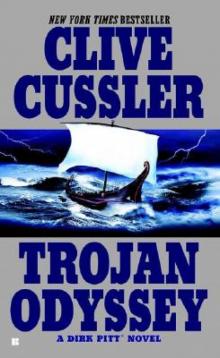 Trojan Odyssey
Trojan Odyssey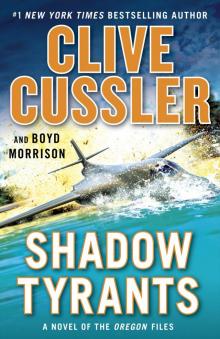 Shadow Tyrants
Shadow Tyrants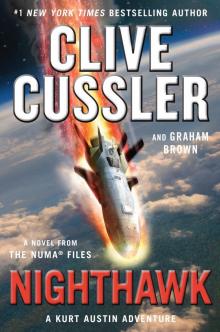 Nighthawk
Nighthawk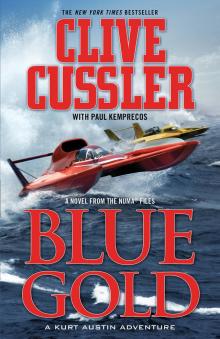 Blue Gold
Blue Gold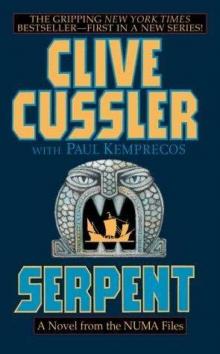 Serpent
Serpent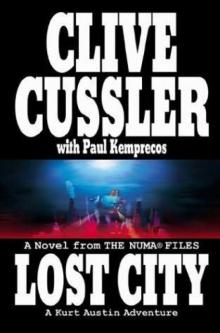 Lost City
Lost City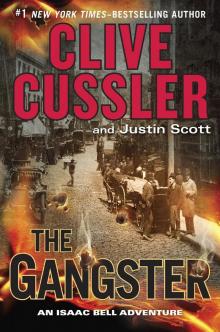 The Gangster
The Gangster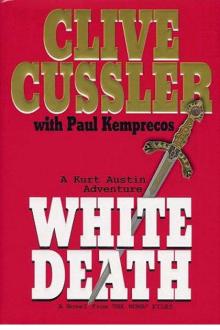 White Death
White Death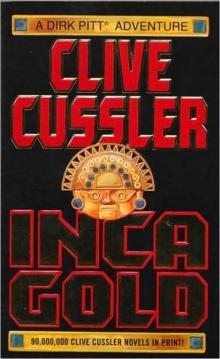 Inca Gold
Inca Gold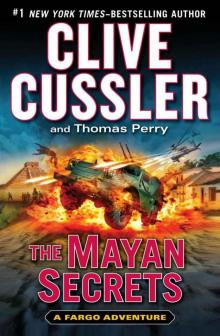 The Mayan Secrets
The Mayan Secrets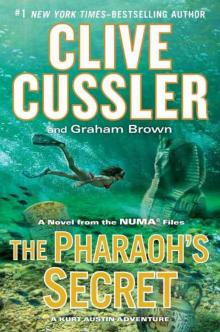 The Pharaoh's Secret
The Pharaoh's Secret The Emperor's Revenge
The Emperor's Revenge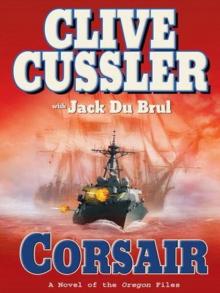 Corsair
Corsair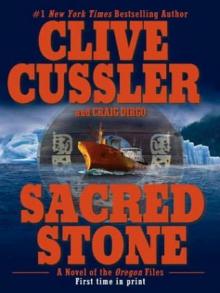 Sacred Stone
Sacred Stone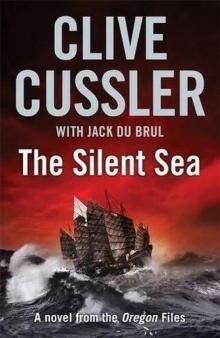 The Silent Sea
The Silent Sea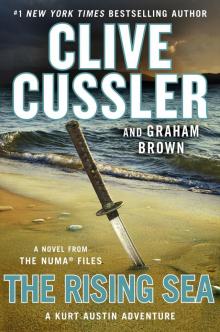 The Rising Sea
The Rising Sea Black Wind
Black Wind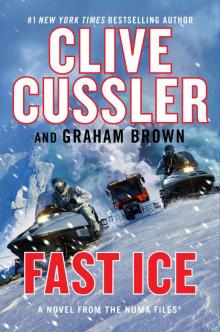 Fast Ice
Fast Ice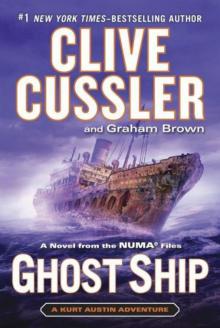 Ghost Ship
Ghost Ship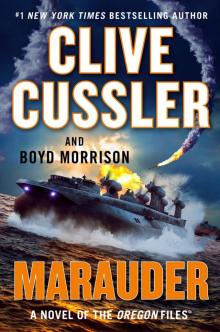 Marauder
Marauder The Thief
The Thief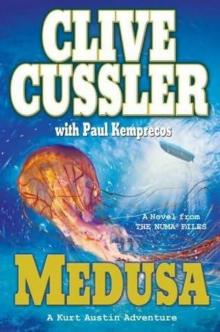 Medusa
Medusa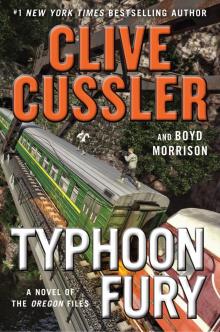 Typhoon Fury
Typhoon Fury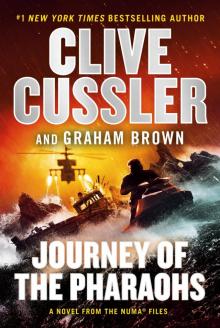 Journey of the Pharaohs
Journey of the Pharaohs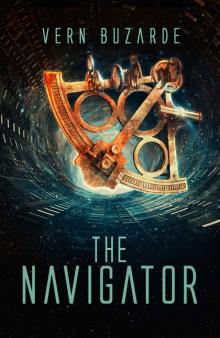 The Navigator
The Navigator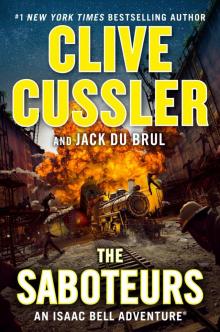 The Saboteurs
The Saboteurs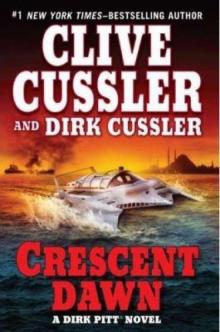 Crescent Dawn
Crescent Dawn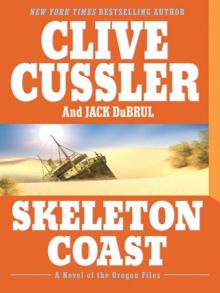 Skeleton Coast
Skeleton Coast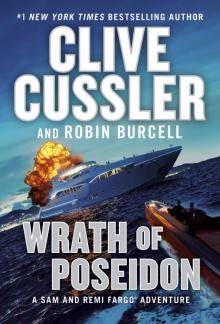 Wrath of Poseidon
Wrath of Poseidon The Mediterranean Caper
The Mediterranean Caper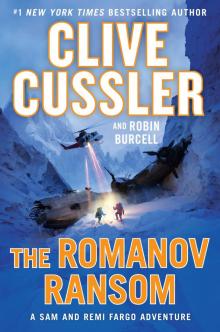 The Romanov Ransom
The Romanov Ransom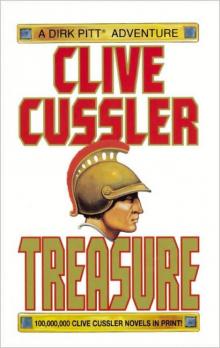 Treasure
Treasure The Race
The Race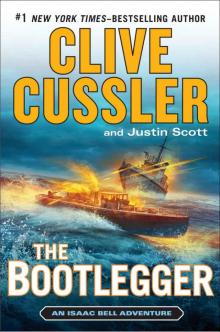 The Bootlegger
The Bootlegger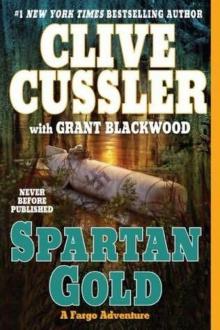 Spartan Gold
Spartan Gold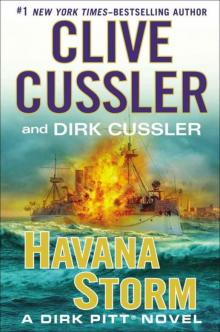 Havana Storm
Havana Storm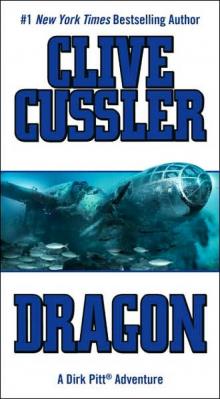 Dragon
Dragon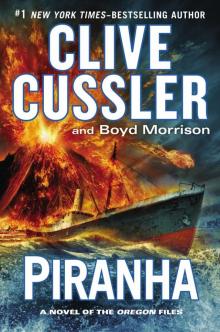 Piranha
Piranha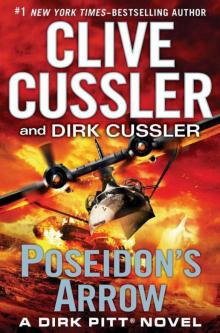 Poseidon's Arrow
Poseidon's Arrow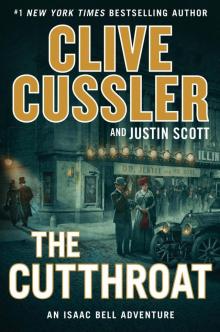 The Cutthroat
The Cutthroat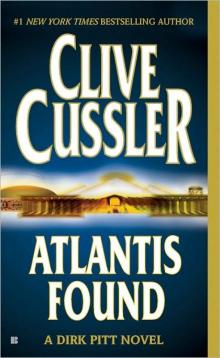 Atlantis Found
Atlantis Found The Jungle
The Jungle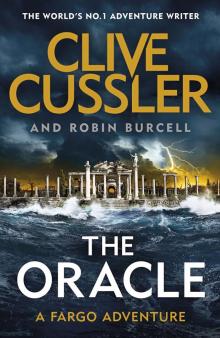 The Oracle
The Oracle Treasure / Dragon / Sahara: Clive Cussler Gift Set
Treasure / Dragon / Sahara: Clive Cussler Gift Set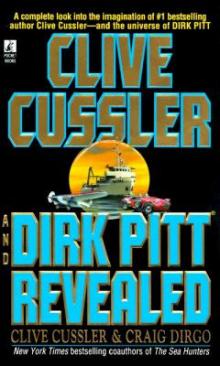 Clive Cussler and Dirk Pitt Revealed
Clive Cussler and Dirk Pitt Revealed The Sea Hunters
The Sea Hunters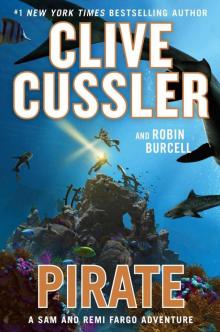 Pirate
Pirate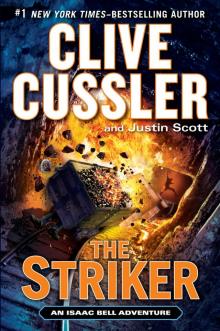 The Striker
The Striker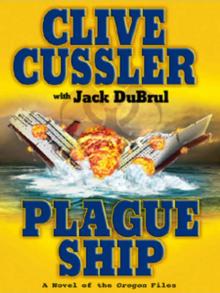 Plague Ship
Plague Ship The Wrecker
The Wrecker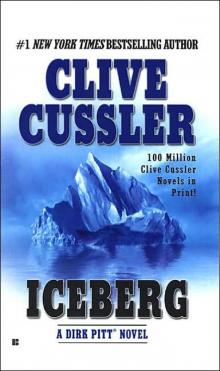 Iceberg
Iceberg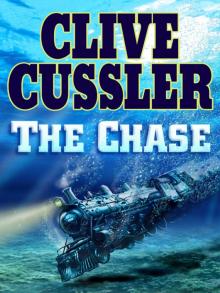 The Chase
The Chase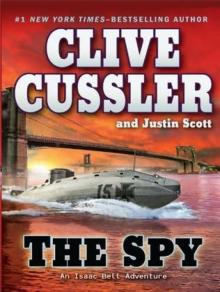 The Spy
The Spy Golden Buddha
Golden Buddha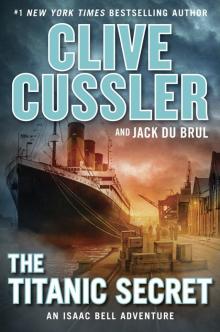 The Titanic Secret
The Titanic Secret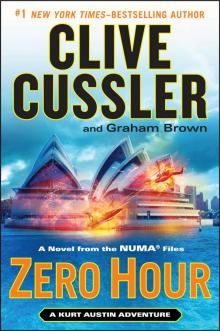 Zero Hour
Zero Hour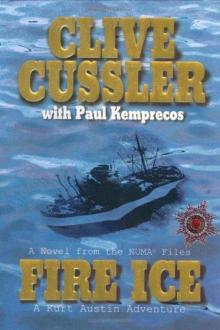 Fire Ice
Fire Ice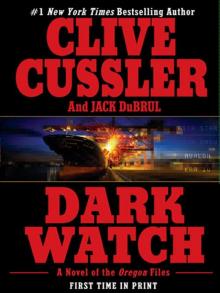 Dark Watch
Dark Watch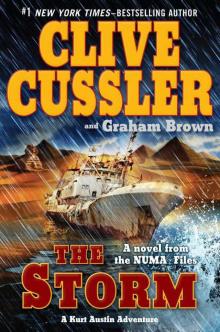 The Storm
The Storm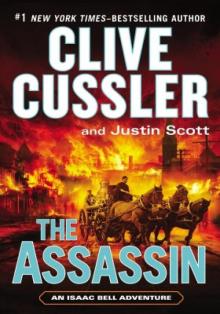 The Assassin
The Assassin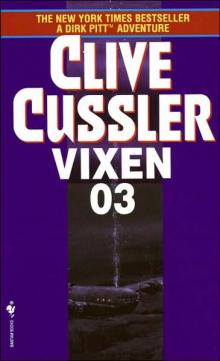 Vixen 03
Vixen 03 Arctic Drift
Arctic Drift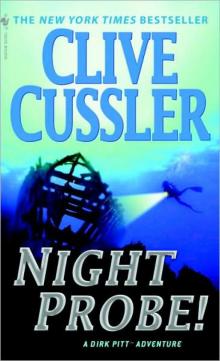 Night Probe!
Night Probe!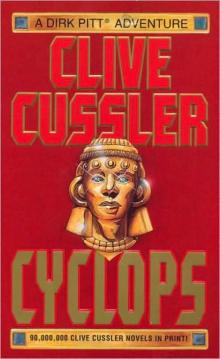 Cyclops
Cyclops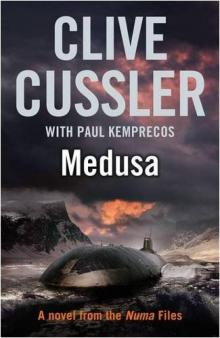 Medusa nf-8
Medusa nf-8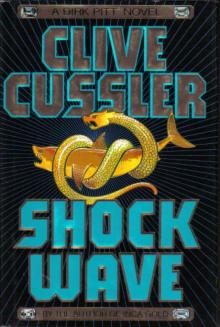 Shock Wave dp-13
Shock Wave dp-13 Marauder (The Oregon Files)
Marauder (The Oregon Files)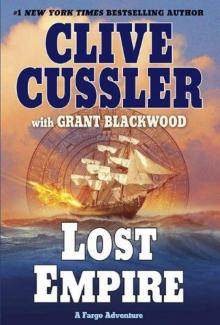 Lost Empire fa-2
Lost Empire fa-2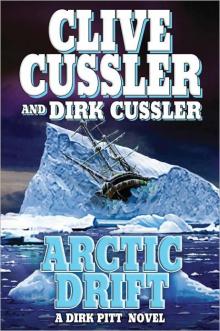 Arctic Drift dp-20
Arctic Drift dp-20 Dirk Pitt 22 - Poseidon's Arrow
Dirk Pitt 22 - Poseidon's Arrow Treasure of Khan dp-19
Treasure of Khan dp-19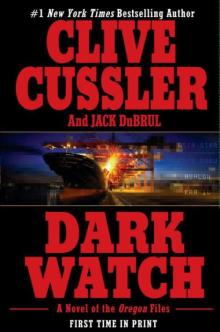 Dark Watch of-3
Dark Watch of-3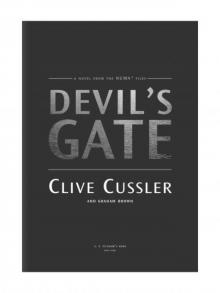 Devil's Gate
Devil's Gate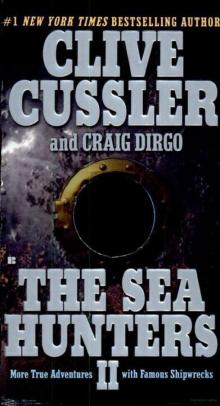 The Sea Hunters II: More True Adventures with Famous Shipwrecks
The Sea Hunters II: More True Adventures with Famous Shipwrecks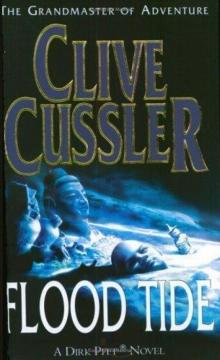 Flood Tide dp-14
Flood Tide dp-14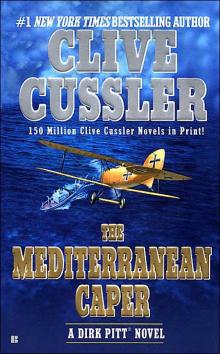 The Mediterranean Caper dp-2
The Mediterranean Caper dp-2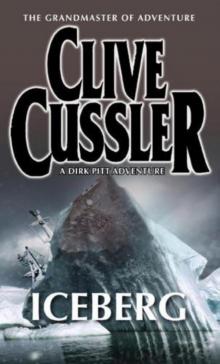 Iceberg dp-3
Iceberg dp-3 Sahara dpa-11
Sahara dpa-11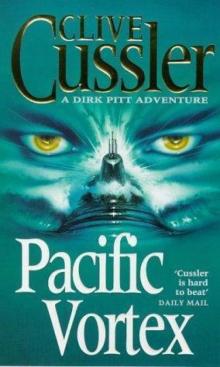 Pacific Vortex! dp-1
Pacific Vortex! dp-1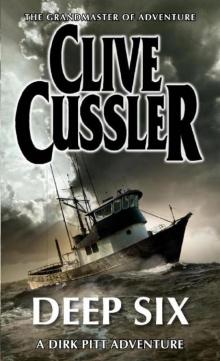 Deep Six dp-7
Deep Six dp-7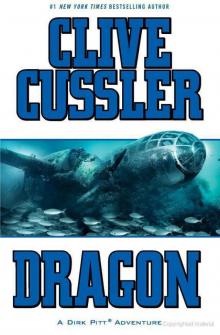 Dragon dp-10
Dragon dp-10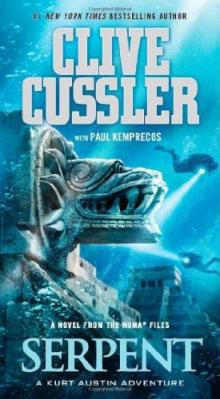 Serpent nf-1
Serpent nf-1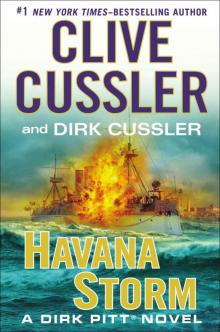 Havana Storm (Dirk Pitt Adventure)
Havana Storm (Dirk Pitt Adventure)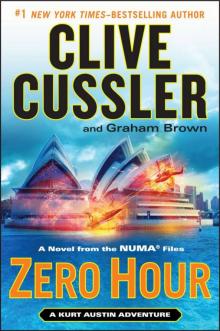 Zero Hour nf-11
Zero Hour nf-11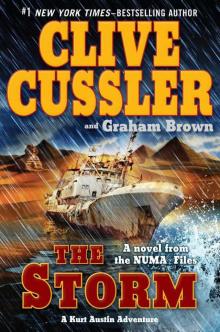 The Storm nf-10
The Storm nf-10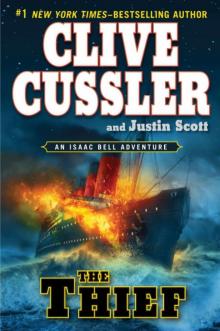 The Thief ib-5
The Thief ib-5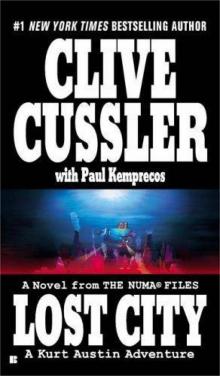 Lost City nf-5
Lost City nf-5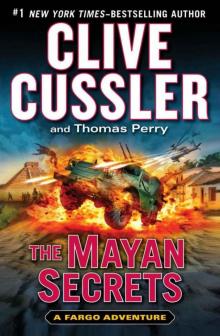 The Mayan Secrets fa-5
The Mayan Secrets fa-5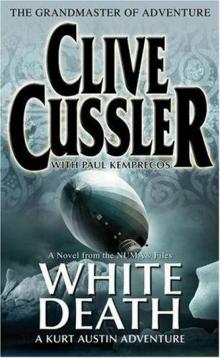 White Death nf-4
White Death nf-4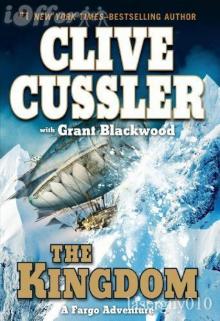 The Kingdom fa-3
The Kingdom fa-3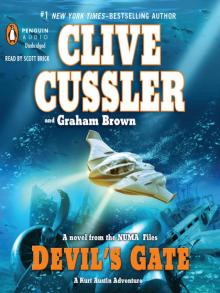 Devil's Gate nf-9
Devil's Gate nf-9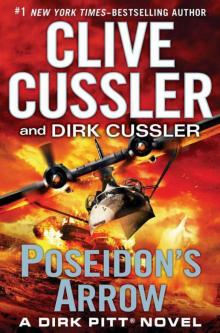 Poseidon's Arrow dp-22
Poseidon's Arrow dp-22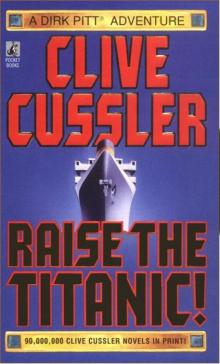 Raise the Titanic dp-4
Raise the Titanic dp-4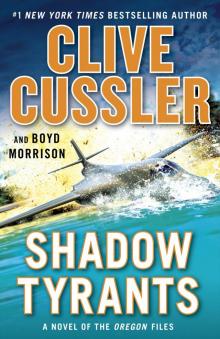 Shadow Tyrants--Clive Cussler
Shadow Tyrants--Clive Cussler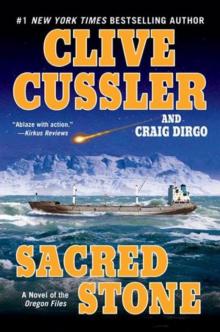 Sacred Stone of-2
Sacred Stone of-2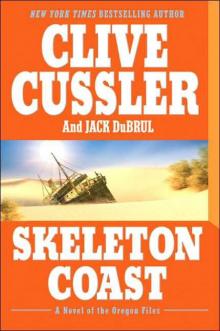 Skeleton Coast tof-4
Skeleton Coast tof-4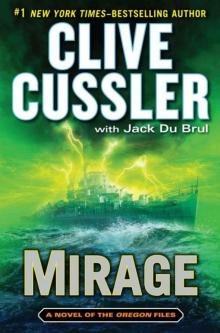 Mirage tof-9
Mirage tof-9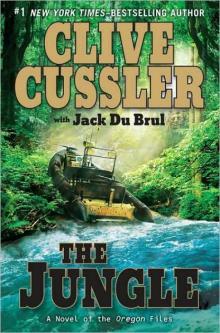 The Jungle of-8
The Jungle of-8 The Emperor's Revenge (The Oregon Files)
The Emperor's Revenge (The Oregon Files) Golden Buddha of-1
Golden Buddha of-1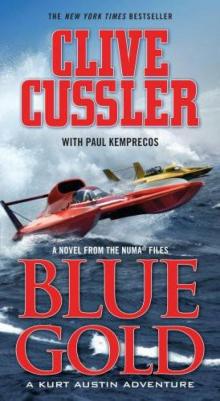 Blue & Gold
Blue & Gold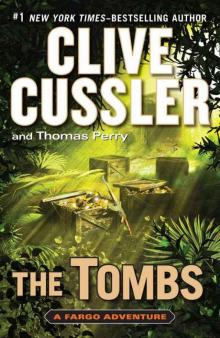 The Tombs fa-4
The Tombs fa-4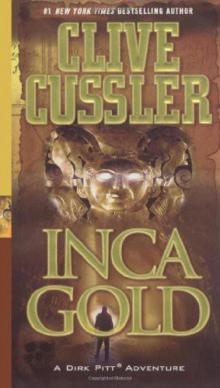 Inca Gold dp-12
Inca Gold dp-12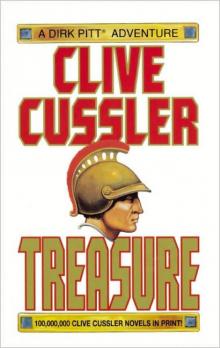 Treasure dp-9
Treasure dp-9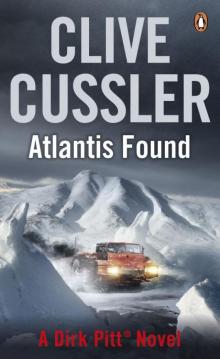 Atlantis Found dp-15
Atlantis Found dp-15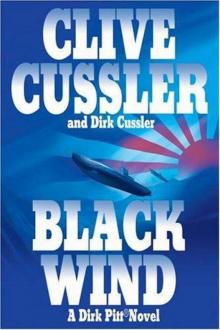 Black Wind dp-18
Black Wind dp-18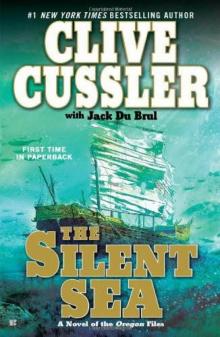 the Silent Sea (2010) tof-7
the Silent Sea (2010) tof-7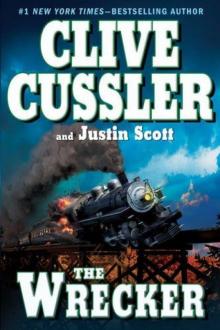 The Wrecker ib-2
The Wrecker ib-2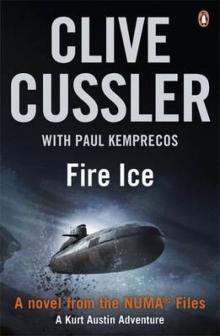 Fire Ice nf-3
Fire Ice nf-3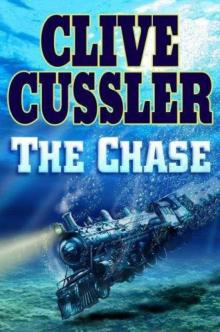 The Chase ib-1
The Chase ib-1 Sahara
Sahara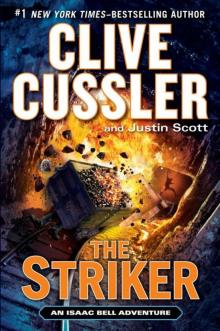 The Striker ib-6
The Striker ib-6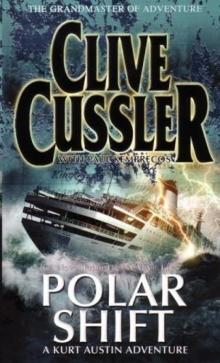 Polar Shift nf-6
Polar Shift nf-6 The Race ib-4
The Race ib-4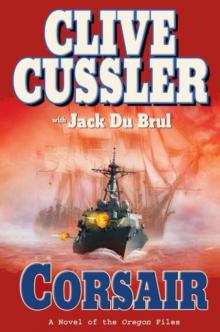 Corsair of-6
Corsair of-6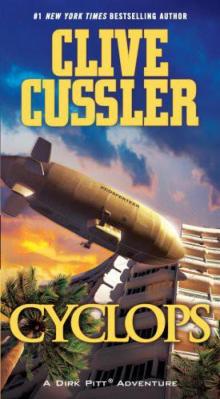 Cyclops dp-8
Cyclops dp-8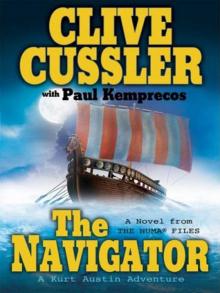 The Navigator nf-7
The Navigator nf-7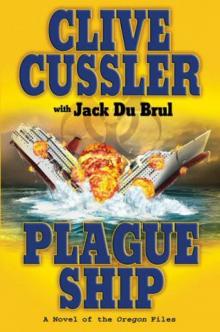 Plague Ship tof-5
Plague Ship tof-5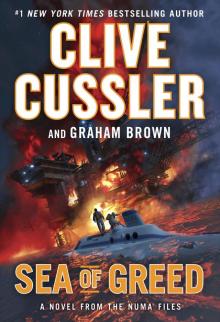 Sea of Greed
Sea of Greed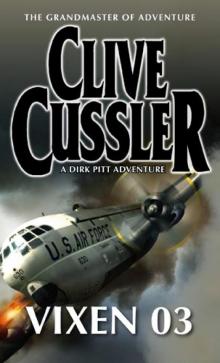 Vixen 03 dp-5
Vixen 03 dp-5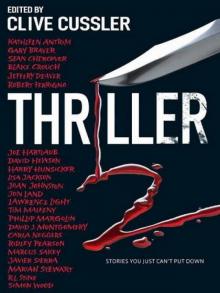 Thriller 2: Stories You Just Can't Put Down
Thriller 2: Stories You Just Can't Put Down